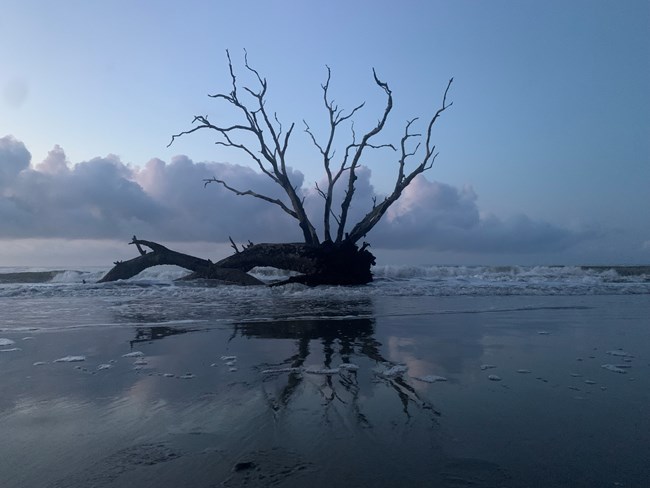Last updated: August 19, 2021
Article
Exploring the Palmetto State's Seven Wonders

Photo courtesy of SCNHC/ Michelle McCollum
Can you name South Carolina’s seven natural wonders? And if so, do you know how we can protect them for future generations?
The seven wonders include mountains and gorges in the west to scenic rivers and a barrier island on the Atlantic coast. This summer, adventurers on the monthlong South Carolina Seven (SC7) Expedition got to explore each one, and in the process learned about environmental stewardship from conservation leaders.
The seven wonders include mountains and gorges in the west to scenic rivers and a barrier island on the Atlantic coast. This summer, adventurers on the monthlong South Carolina Seven (SC7) Expedition got to explore each one, and in the process learned about environmental stewardship from conservation leaders.

Photo courtesy of SCNHC/ Michelle McCollum
“The core organizations pulled in over 50 partners across the state to make this annual 30-day expedition a success,” says SCNHC Executive Director Michelle McCollum.
The SC7 itinerary followed the Palmetto Trail, which connects each of the state’s seven wonders. From east to west, they include: Sassafras Mountain, Jocassee Gorges, Chattooga River, Congaree National Park, Edisto River, Ace Basin, and Bulls Island. You can get a better sense of where the trip trekked this year by looking at the SC7 2021 Digital Field Guide.
The Expedition was led by Tom Mullikin, chair of the Governor’s South Carolina Floodwater Commission (SCFC). Mullikin is also known as a world-class explorer: his credentials include being named a National Geographic expert and a Fellow of the Royal Geographic Society. Mullikin's current work at SCFC includes “leading the effort to build a flood-mitigating ocean-reef off the coast of South Carolina.”

Congaree National Park/ NPS Photo
According to Mullikin, SC7 provides not only an opportunity “to explore some of the most uniquely beautiful places on earth right here in South Carolina,” but also to “create international awareness of the natural treasures our state has to offer.” SC7 even published a digital Flora & Fauna Guide to highlight regional ecology associated with sites that the trekkers experience during the trip.

Courtesy of SCNHC/ Michelle McCollum
Mullikin sees SC7 as “the perfect stage to highlight how South Carolina is leading the way in developing and advancing resiliency strategies to address adverse weather from a changing climate.”
The Expedition includes a series of “Fireside Chats” led by partners who are environmental experts. Topics this year included floodwater mitigation, conservation, and climate resilience.
“As more people are introduced to issues related to a changing climate, the more they begin to realize what can be done at a micro level on this global issue and how we can each play a part in effecting meaningful change,” says McCollum.

Courtesy of Khyla Porter
This year, the trip’s last days brought travelers to their eastern terminus on the Atlantic Coast. Day 29 explored Bulls Island, one of many barrier islands that are part of Gullah Geechee Cultural Heritage Corridor.

Courtesy of Khyla Porter
“It was amazing!” says Liene, who carried her one-year-old on her back the whole way. “It was great that I could step back and not be a teacher for a while.”
While Liene’s children had different favorite parts, each were full of excitement when asked about what they enjoyed most. Mikus (age 9) loved whitewater rafting day, while Lauris (age 11) said the best part was the Rainbow Falls hike. Vilis (age 6) exclaimed “I don’t like only half of it…I like every part!” With so many gems packed into one trip, it’s no wonder that it’s tough to choose a favorite.
Those who want to join in on the fun next year can stay tuned on the SC7 website for upcoming related events in the South Carolina National Heritage Corridor before next summer's 2022 Expedition.

Courtesy of Khyla Porter

Courtesy of SCNHC/ Michelle McCollum

Courtesy of Khyla Porter

Courtesy of Khyla Porter

Courtesy of Khyla Porter
